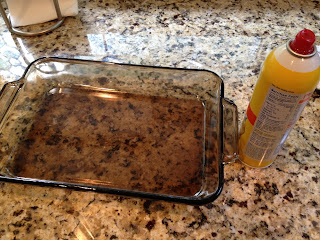As happens every year, the whole idea of holiday cards and the obligatory holiday photo of the kids provided me with an ample dose of agita. Last week, I finally sat down to choose a photo of the kids, upload said photo, create the card online and order cards. The photo card software did not like the format of the picture I chose. Or the next three. Argh. After a few more tries and a few more sites, I decided to simply order reprints and mail regular cards.
I started looking online at greeting cards, didn't really like any I saw, and considered just making my own cards. Did I have time for making holiday cards? With 12 days left before the holiday? And shopping, school projects, and baking to do? How did I get myself in this predicament again?
Then I stumbled upon an origami site that had tutorials for several holiday-themed models. They were so cute. I decided that, maybe, I did have time to make Origami Holiday Cards. I scratched holiday baking off the to-do list and, instead, spent an afternoon folding paper. Crazy talk, I know. However, the process turned out to be relaxing and fun. The decision was kinder to my waistline, gave me a new skill, and resulted in some really cute cards. Bye-bye agita.
Materials I used:
- Greeting Cards and Envelopes - I purchased a pack that included red/green cards and white envelopes.
- Origami Paper - I purchased 7" x 7" Origami paper in multiple colors.
- Paper Punches - snowflake and star
- Bone Folder
- Adhesive
- Online Origami Patterns
 |
| Materials needed for Origami Holiday Cards |
When I hunted around for some spare paper with which to create the origami, I realized that my scrapbooking paper was a bit heavy, and colored on both sides. I headed out to the craft store and bought a package of papers (with assorted solid colors). Origami paper is relatively thin, holds a crease very well, and is typically white on one side. It's sold in several standard sizes.
Origami Folds:
Most origami is created using a combination of standard folds. Take a look at this website for descriptions and demonstrations of each fold. For some folds, I used a bone folder, a common card making and book binding tool, to keep the creases smooth.
Making My Origami Models:
I found a tutorial for folding tree models and got to work. It's pretty basic (requires seven simple folds), but was so striking when completed. I added the yellow star on top using a mini craft punch.
 |
| Origami Trees |
 |
| Origami Santa |
 |
| Origami Bell |
 |
| Wrapped Packages |
After all the origami was completed, I began assembling the cards. I adhered the models to the card fronts, glued the photo to the inside and signed the card. The back of each card is punched with a snowflake and initialed. The snowflake appears white because the back of the photo (inside the card) is white.
 |
| Back of card |
















.JPG)
.JPG)

.JPG)
